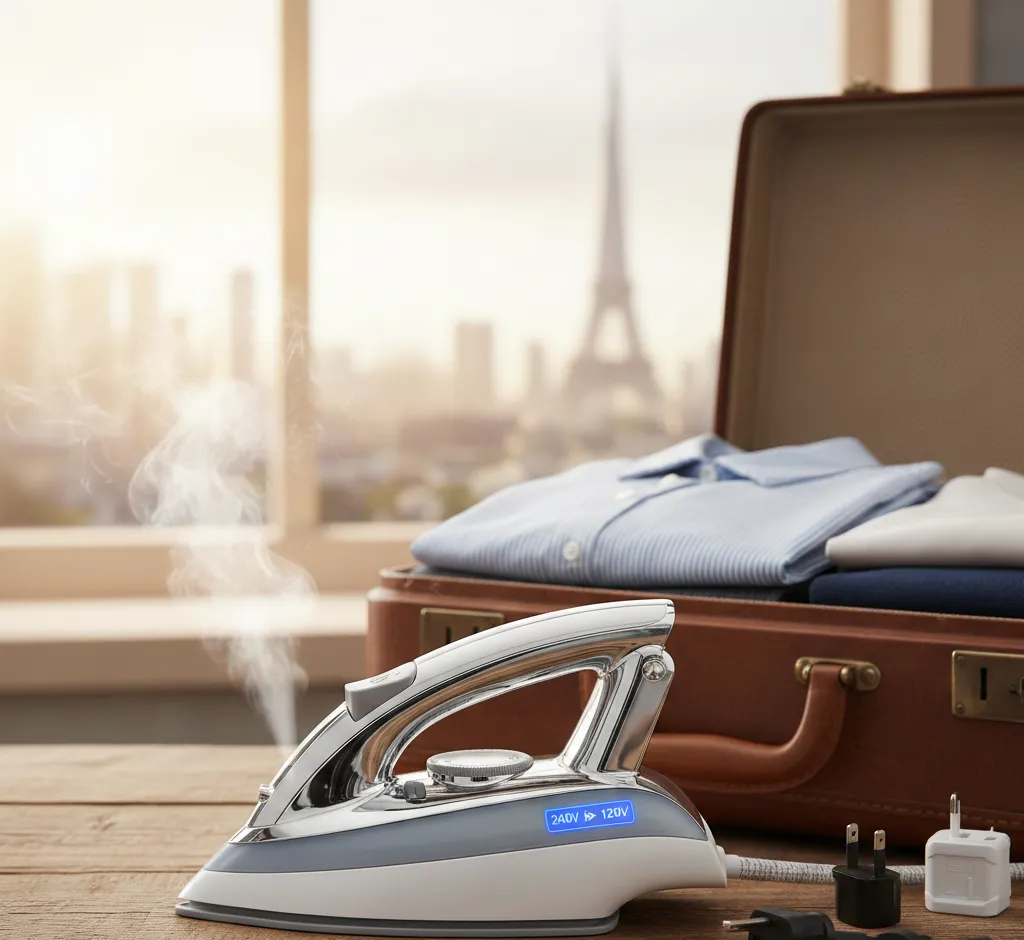The Global Traveler’s Essential: Variable Voltage Steam Irons for Seamless International Living
Discover the essential variable voltage steam irons for international travel. Learn about dual-voltage technology, automatic detection, and compact features to ensure wrinkle-free clothes globally without needing a voltage converter.

🌍 The Era of Global Travel and the Universal Ironing Problem
In our increasingly interconnected world, where business trips span continents and vacations become global adventures, the concept of a ‘global home’ is becoming a reality for many. Yet, even the most seasoned travelers encounter a persistent, frustrating hurdle: incompatible electrical standards. This issue becomes particularly pronounced with high-wattage appliances like steam irons. Plugging a standard 120V iron into a 240V socket is a recipe for a fused circuit or, worse, a ruined appliance. Enter the **Variable Voltage Steam Iron**, a device engineered to solve this universal ironing problem, making it an essential tool for anyone whose life requires crossing borders.
What Exactly is a Variable Voltage Steam Iron?
A variable voltage, or dual-voltage, steam iron is a sophisticated appliance equipped with a switch or an internal mechanism that allows it to safely operate on two main ranges of electrical power: the **100V-127V range** (standard in North America, Japan, and parts of South America) and the **220V-240V range** (standard across Europe, Asia, Africa, and Australia). The user simply flips a manual switch, or the iron automatically detects the voltage, ensuring the internal components are correctly configured to handle the incoming electrical current without damage.
Key Voltage Ranges Explained
- North American Standard: 110V – 120V / 60 Hz
- European/Global Standard: 220V – 240V / 50 Hz
🔑 Features That Make Dual-Voltage Irons Indispensable
While the ability to switch voltages is the core feature, modern variable voltage irons are packed with other travel-friendly and performance-enhancing specifications that elevate them beyond simple single-voltage models.
1. Automatic Voltage Detection (AVD)
The most advanced models eliminate the need for manual switching altogether. These **Automatic Voltage Detection (AVD) irons** sense the incoming current and adjust their internal transformer and heating elements accordingly. This feature is particularly valuable for frequent travelers, as it removes the risk of user error—the single biggest cause of appliance damage when crossing voltage zones.
2. Compact and Lightweight Design
To qualify as a true travel companion, a dual-voltage iron must be **compact**. Most models are designed to be smaller and lighter than their full-sized domestic counterparts, often featuring foldable handles and streamlined soleplates, ensuring they don’t consume excessive space or weight in luggage—a critical factor given increasingly strict airline baggage limits.
3. High Wattage and Quick Heat-Up
Despite their smaller size, the best variable voltage irons do not compromise on power. Look for models with a **wattage rating above 1,000W**. Higher wattage ensures a quick heat-up time and the sustained heat necessary for effective steam generation and wrinkle removal, even on stubborn fabrics like linen and denim. This is a common performance metric that should not be overlooked.
4. Effective Steam Generation
The iron’s effectiveness hinges on its steam output. Key steam features to look for include:
- Continuous Steam: A consistent flow for smooth gliding.
- Steam Burst/Shot: A powerful jet for tackling deep creases.
- Vertical Steam: The ability to refresh garments while they are on a hanger, useful for quick touch-ups or delicate items.
5. Non-Stick and Durable Soleplates
The soleplate material is crucial for performance. **Ceramic soleplates** are generally preferred for their excellent heat distribution and non-stick properties. **Stainless steel** is also durable and smooth. For global use, a robust, scratch-resistant soleplate is essential to withstand varying water quality and ironing surfaces encountered in different accommodations.
💡 A Practical Guide to Using Dual-Voltage Irons
Using these irons safely and effectively involves a few simple, yet critical, steps, especially for models requiring manual switching.
1. The Critical Step: Checking the Voltage Switch
Before plugging in a manual dual-voltage iron, you must **verify the local electrical outlet’s voltage**. This information is usually stamped or printed near the outlet or available from hotel/hostel staff. Once the local voltage is confirmed (e.g., 240V), you must physically slide or turn the selector switch on the iron to the corresponding setting.
2. Adapter vs. Converter
It is important to understand that a variable voltage iron **eliminates the need for a bulky voltage converter**. The iron itself is the converter. However, you will still need a **plug adapter** to physically fit the iron’s prongs into the different shapes of wall sockets (e.g., converting a North American Type A plug to a European Type C/F plug).
3. Water Quality Considerations
When using a steam iron globally, the quality of the water can vary significantly. Hard water, which is high in mineral content, can lead to a rapid buildup of limescale inside the iron’s steam chambers, clogging the vents and reducing steam output. For optimal maintenance and longevity, travelers should use **bottled or distilled water** whenever possible, particularly in regions known for hard tap water. Most quality dual-voltage irons also feature a self-cleaning or anti-calc (anti-scale) function.
📈 The Future of Ironing for the Modern Home
The variable voltage steam iron is more than just a convenience; it's a testament to how appliance engineering is keeping pace with a mobile, globalized lifestyle. It allows individuals to maintain a professional appearance regardless of their location, embodying the spirit of preparedness and self-sufficiency. As travel continues to surge and the lines between work and leisure blur, these appliances will transition from a niche travel accessory to a standard, expected feature in the modern, global-ready household.


